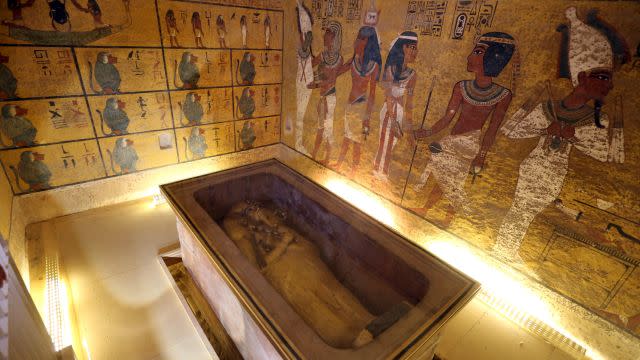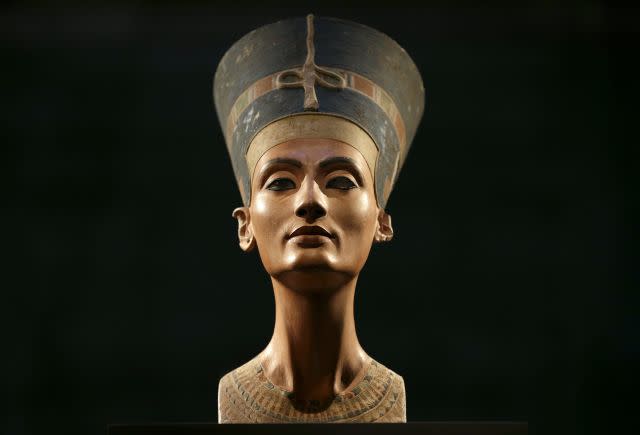Archaeologists may have found Queen Nefertiti’s secret burial place

In what could be the find of the century, new evidence has emerged to show a secret chamber may exist behind the tomb of King Tutankhamun, also known as King Tut. Archaeologists believe it houses the burial site of Queen Nefertiti.
Enormous interest has followed Nefertiti, wife of the Egyptian Pharaoh Akhenaten, who is believed to have at one point ruled over ancient Egypt. But after occupying the throne for over a decade, historians are not sure what became of her in the later years. Her mystery gained even more renown following the discovery of a 3,000 year old bust in 1912 by German archaeologists that captures her legendary beauty. The bust is currently on display, controversially, at the Neues Museum in Berlin.
Last November, researchers took scans of Tutankhamun’s tomb in Luxor, and the results show the possible presence of two empty spaces behind its walls. Inside may be Nefertiti’s final resting place, said Mamdouh Eldamaty, Egypt’s antiquities minister, to reporters on Thursday (Mar. 17). “(The scans point to) different things behind the walls, different material that could be metal, could be organic,” he said, according to Reuters. “We can say more than 90% that the chambers are there. But I never start the next step until I’m 100 percent.”

In a paper published in August, British Egyptologist and former curator at New York’s Metropolitan Museum Nicholas Reeves argued that King Tut’s tomb contained an antechamber belonging to Nefertiti, after examining high-resolution photos of the tomb.
Eldamaty said that further research will be conducted to determine whether the space behind the walls are indeed chambers. If that is proven, researchers will enter the tomb to find out if Nefertiti has been lying inside.
The discovery could revive Egypt’s flagging $13 billion tourism industry, which has been decimated by political upheaval and fears of terrorism.
“It can be the discovery of the century,” Eldamaty said. “It’s very important for Egyptian history and the history of the world.”
Sign up for the Quartz Africa Weekly Brief — the most important and interesting news from across the continent, in your inbox.

Sign up for the Quartz Daily Brief, our free daily newsletter with the world’s most important and interesting news.
More stories from Quartz:

